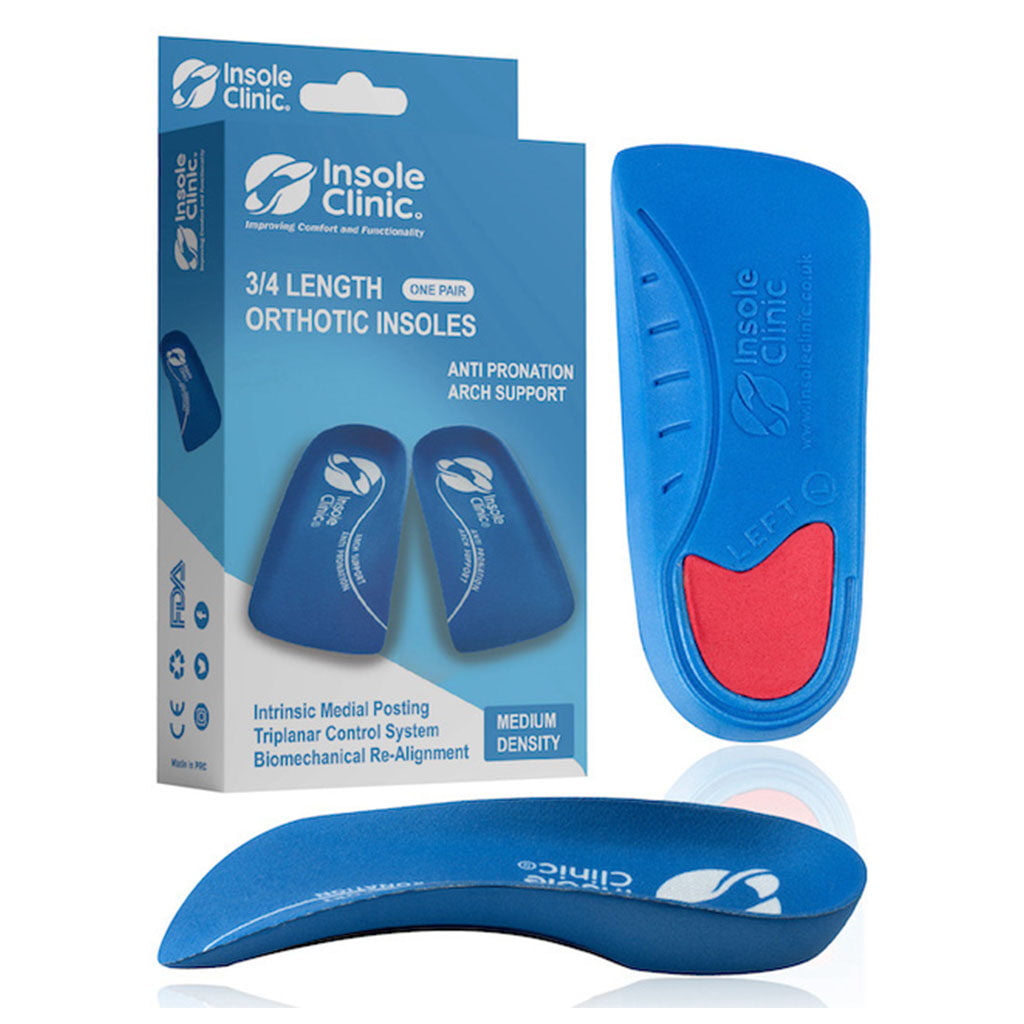Flat Foot
What is Flat Foot
The term flat foot (fallen arch) is diverse and includes numerous conditions of flat feet. It is estimated that one in five people in Britain is affected by one or the other type of flat feet conditions. But, Not everyone need off the shelf insole. We strongly recommend bio mechanical assessment before using any type of Insoles. Using a wrong Insole may worsen the condition and can have significant impact over knee, hip and lower back.
Good arches provide support to hold the body weight, provide stability and allow smooth gait. Any deformation to the feet arches can lead to collapsed foot structure, less stability, fatigue after walk even for short distances, sever pain in the middle of the foot and can cause pain in knees, hip and lower back.
Flat feet can be hereditary and may be running in the family. They may also result from injury to bones and tendons, sometimes caused by illnesses i.e. foot arthritis, diabetes, and neuromuscular diseases. Our Orthotists will carry out a thorough assessment to identify the need for the most appropriate INSOLES.
Flat foot is a common form that may affect anybody anywhere throughout the world. we will discuss the causes, symptoms, and various treatment options available for flat foot. By gaining a better understanding of this condition, you can take steps to manage it effectively and improve the overall health of your foot.
Causes of Flat Foot
Flat foot i.e. fallen arches or pes planus, can have several causes. It may be a congenital condition, meaning you are born with it. Alternative factors are:
- Weak arches: The arches of your feet play a crucial role in supporting your body weight. Weak arches can lead to flat foot.
- Injury: Trauma or injury to the foot can result in a flat foot condition.
- Aging: As we age, the tendons and ligaments in our feet may weaken, contributing to the development of flat foot.
- Medical conditions: Certain medical conditions like arthritis, diabetes, and obesity can increase the risk of flat foot.
Symptoms of Flat Foot
Identifying the symptoms of flat foot is essential for early intervention. Some common signs of flat foot include:
- Pain or discomfort in the arches, heels, or ankles.
- Difficulty standing on tiptoes or balancing on one foot.
- Swelling along the inside of the ankle.
- Feet tire easily or become painful after prolonged standing or physical activity.
- Abnormal shoe wear patterns.
Treatment Options
Fortunately, several treatment options are available for managing flat foot.
- Arch supports or orthotic devices: These can provide additional support and stability to the arches of your feet.
- Physical therapy exercises: Strengthening exercises can help improve foot and leg muscles, providing better support to the arches.
- Medications: Over-the-counter pain relievers or anti-inflammatory drugs may help alleviate discomfort and reduce inflammation.
- Proper footwear: Wearing shoes with good arch support and cushioning can help reduce pain and prevent further damage.
- Surgery: In severe cases, surgery may be considered to reconstruct or repair the affected foot structures.

